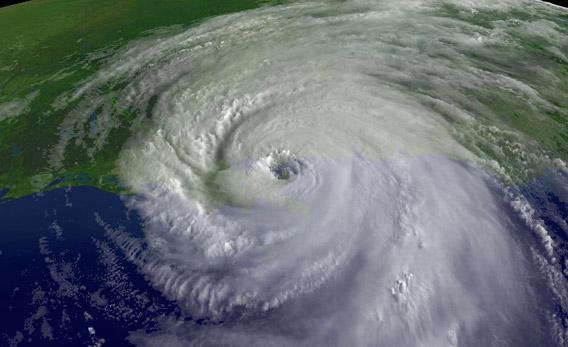Hurricane Sandy charged into the mid-Atlantic and Northeastern United States today. Sandy isn’t exactly a common name these days. How can you get a tropical storm named after yourself?
Lobby the National Weather Service. The World Meteorological Association maintains lists of tropical storm names for each of the next six years. When that six-year cycle ends, the sequence of names goes back to the beginning. If your name is Valerie, for example, you might have a storm named after you this year and again in 2018. Wilfreds can hope for tropical storm namesakes in 2014 and 2020. Ophelias should stay tuned to the forecast in 2017 and 2023. (These names only apply to storms in the Caribbean, Gulf of Mexico, and North Atlantic. There are separate lists for storms originating in other parts of the world.) The lists of names don’t change until a storm becomes so powerful and damaging that the World Meteorological Association retires its name from rotation out of respect for the victims of the storm. There will be no more Hurricanes Katrina or Andrew, for example. When a name is retired, the WMO’s Tropical Cyclone Committee picks a replacement name at its annual meeting. There is no official opportunity to put your name into consideration, so the best avenue would be to lobby the National Weather Service, which represents the United States at these meetings. For the record, the NWS does not invite name proposals.
Although the Tropical Cyclone Committee endeavors to choose names that are “familiar to the people in each region,” the popularity of a name in the United States seems to carry little importance in the name selection process. “Sandy” barely cracked the top 200 most popular U.S. female names in 1947, and fell out of the top 1,000 six years ago. Irene, which was retired last year, was among the most popular girls’ names in the 1920s, but hasn’t seen the top 200 since 1961 and now ranks 689th. Its replacement, Irma, dropped out of the top 1,000 names 17 years ago. This year’s most popular names, Sophia and Jacob, are not on any of the tropical storm name lists.
The popularity of a name in the United State may not influence the World Meteorological Association’s selection process, but the names of hurricanes appear to affect the popularity of baby names. According to research published this year in the journal Psychological Science, repeatedly hearing the name of a damaging storm causes Americans to choose baby names with similar sounds to the name of the storm. The researchers noted that after Katrina struck, there was a 9 percent increase in names beginning with the letter “K.”
Got a question about today’s news? Ask the Explainer.
